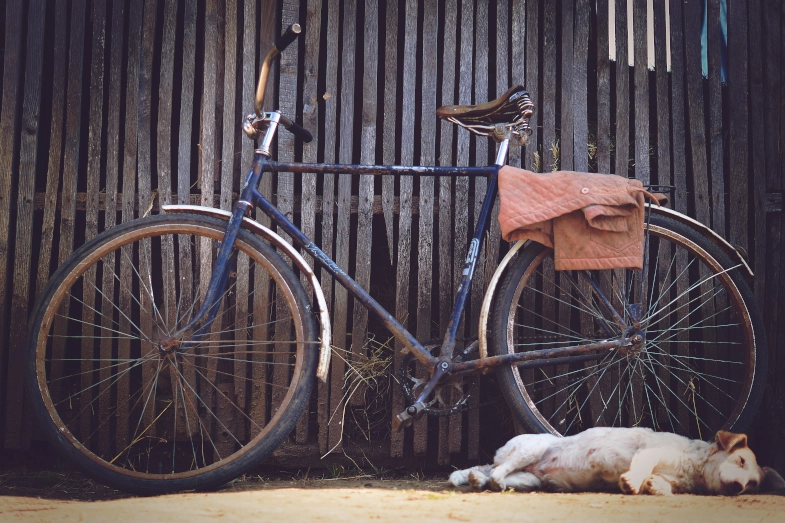Cycling with your dog can be a fun activity. However, before you strap on that helmet and leash, it is essential to weigh the pros and cons to determine if cycling with your dog is a good idea.
As a general rule, cycling with your dog is safe if your dog is well-trained and is a medium to large breed size. For example, small breeds will struggle to keep up with the pace. Then, an aggressive dog will put you and your dog at risk of an accident.
In addition, adequate training, safety precautions, and patience are fundamental to a successful cycling outing with your dog. Every dog is different, and while some may thrive on the open road, others might be happier with a leisurely walk around the park. Let’s go into more detail on the pros and cons of riding with your dog and some tips for a safe ride.
Pros of cycling with your dog
- Strengthens the bond. Exploring new trails, parks, and paths becomes a shared experience that strengthens your bond with your dog.
- Physical Exercise. Dogs need regular exercise to maintain a healthy weight and stay mentally stimulated. Cycling provides a faster-paced workout to help burn off excess energy and keep your dog fit.
- Mental Stimulation. Exposing your dog to different scents, sights, and sounds during a cycling trip can provide mental enrichment and prevent boredom.
- Improved Obedience. Cycling requires your dog to follow your lead, reinforcing obedience training and enhancing your pup’s ability to respond to commands.
Cons of cycling with your dog
- Physical Limitations. Not all dogs are built for rigorous exercise. Breeds with short legs or certain health conditions may struggle to keep up or sustain the pace of a cycling ride.
- Training and Behavior. Cycling with your dog requires a high level of training, as your pet needs to remain well-behaved around traffic, other cyclists, and various distractions. Failure to do so could lead to safety issues.
- Safety Concerns. Both you and your dog must wear appropriate safety gear, such as helmets for you and a well-fitting harness for your dog. There’s also the risk of accidents, especially if your dog suddenly pulls or loses focus.
- Environmental Factors. Extreme weather conditions, hot pavement, and uneven terrain can harm your dog’s paw pads and overall health. Ensuring suitable weather and path conditions is crucial.
- Stress and Overexertion. Cycling might be overwhelming for some dogs, causing anxiety or excessive exhaustion. Monitoring your dog’s behaviour and energy levels throughout the ride is essential.
Tips for a safe ride
Assuming that your dog has no physical limitations and is well-trained, you will require planning and a gradual approach to introducing your dog to bike rides. The list below highlights some steps to gradually follow.
- Familiarize your dog with the bike. Before you start riding, allow your dog to become accustomed to the bicycle. Let them sniff, investigate, and get comfortable being around it.
- Start with short walks with the bike. Attach your dog’s leash to the bike and go for short walks, pushing the bike alongside you. Increase the distance gradually. This helps your dog get used to the bike’s presence and movement.
- Practice commands. During these walks, practice obedience commands. Encourage your dog to walk calmly beside the bike and reward them for good behaviour.
- Positive Associations. Associate the bike with positive experiences. Give treats and praise when your dog behaves well around the bike.
- Choose Suitable Routes. Before your first actual ride, select dog-friendly routes with smooth surfaces, minimal traffic, and few distractions. Avoid busy roads or crowded areas. You want every ride to be a positive experience for you and your dog.
- Try short rides first. Once your dog is comfortable with the bike’s movement, start with short rides in a safe, low-traffic area. Pay attention to your dog’s reactions and energy levels.
- Practice stops and starts. Teach your dog to stop and start with the bike. This is essential for safety during rides.
- Consult Your Veterinarian. Before embarking on longer rides or more intense exercise, consult your veterinarian to ensure your dog is fit for cycling.
- Gradually Increase Ride Duration. As your dog becomes more accustomed to cycling, gradually increase the ride duration. Make sure to provide water breaks and rest as needed.
- Monitor your dog. Watch for signs of stress, anxiety, or exhaustion during rides. Regularly check their paws for any signs of discomfort. If your dog shows signs of discomfort, stop and assess the situation.
- Adapt to your dog’s pace. Remember that your dog’s pace might not match yours. Be patient and adapt your speed to accommodate your dog’s comfort.
Conclusion
Introducing your dog to bike rides should be a gradual and positive experience. Pay attention to your dog’s cues and adjust your approach accordingly. Not all dogs will enjoy cycling, so it’s important to prioritize their comfort and safety throughout the process.
But remember, it is not just about your dog. You also need to enjoy the experience. For example, I tried jogging and cycling with my dogs, but I don’t enjoy doing it as I prefer these activities without distractions and to unwind. Instead, I take my dogs for long walks.
Recent Posts
Make your garden safe for your dog. Discover in this post the top 10 plants that are poisonous to dogs.
Keeping a dog entertained while away prevents boredom and anxiety that can lead to unwanted behaviour. Follow these tips to keep your dog mentally stimulated.

